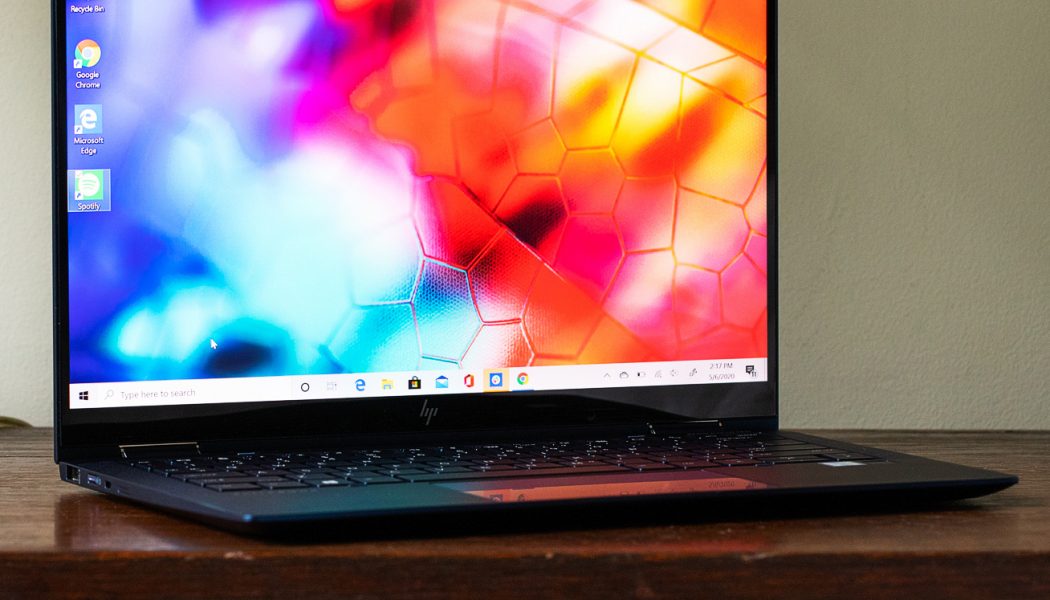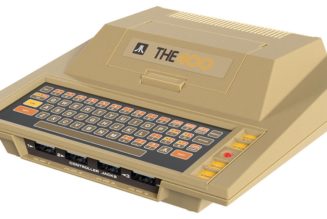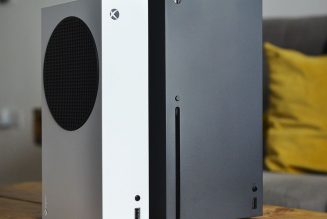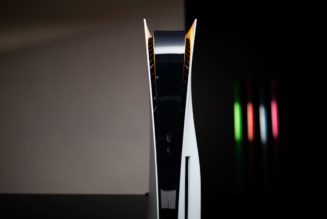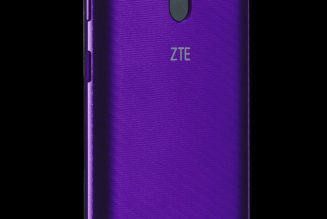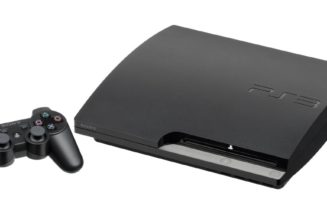Last year’s HP Elite Dragonfly was perhaps the nicest business laptop we’ve ever tested. This year’s Elite Dragonfly is almost identical to that machine, which is fine because, again, the HP Elite Dragonfly was exceptional in just about every way.
This new configuration largely feels and looks the same as last year’s model; it’s still one of the sleekest, chicest business laptops on the market, and it has the most eye-catching design of any convertible that HP currently sells.
HP has changed four things. First, the Dragonfly is now 5G-enabled, though that feature isn’t coming until mid-2020. Second, it has an integrated Tile tracker, which is coming to models in mid-May. Third, it has a new privacy-oriented screen that includes HP’s latest Sure View Reflect technology. Fourth, its mechanical parts are now mostly built from recycled materials.
The new Dragonfly is thin, light, beautiful, and just about flawless. You can get the base configuration for around $1,500, but the model we’re looking at costs $2,179, which is quite a price tag. (This specific model doesn’t seem to be available on HP’s website yet, but configurations with similar specs, including Tile, an i7, vPro, and the Sure View Reflect screen are in the $2,100 to $2,700 range, depending on RAM, storage, and other features.) The new features work, but they’re luxuries, not necessities, for the vast majority of people. If you’re a C-Suite power user who’s always on the go, they might be a worthy budget expense for you. But you’ll probably be just fine with a cheaper EliteBook unless money is really no object for you or your company.
HP has been phasing in recycled materials into the Elite Dragonfly over the past year. It’s the first ultrabook to incorporate ocean-bound plastics (that is, plastic litter collected in maritime areas, which would otherwise have ended up in the ocean). The company said last year’s model would incorporate 50 percent PCR plastics (and 5 percent ocean-bound plastics) in its speaker box and 35 percent PCR plastics in its bezels.
The company’s goals, since then, have become more ambitious. It announced at CES 2020 that over 80 percent of the Dragonfly’s mechanical parts and 90 percent of the magnesium chassis are now made of recycled materials. This initiative isn’t specific to Dragonfly; HP says that other new HP Elite and HP Pro computers will incorporate the new composite components.
The F2 key toggles between privacy mode and sharing mode.
The new material hasn’t cheapened the chassis in any way. I can’t remember the last time I held a laptop this light that felt this sturdy. (HP did not respond to multiple inquiries about the exact weight and dimensions of this unit, but it’s around 2.5 pounds.)
There’s no flex in the keyboard and almost none in the display. The chassis also feels very nice to the touch; the magnesium is smooth, and the rounded edges and corners mean you never get poked. Fingerprints are often a worry on dark products, but the wrist rests and keyboard remained print-free after several days of use. The touchpad and lid accumulated some, but I could only see them under bright light.
HP has also swapped out the plastic coverings on the keyboard (the material is now 50 percent sourced from recycled DVDs) and the screen’s bezels (now 35 percent recycled plastic). The keycaps are a bit plasticy but still feel great, and the bezels don’t look any different from those on the old model.
The new Dragonfly looks and feels like a very nice computer. And hey, now it’s more sustainable.
The second big change is the new screen, which uses HP’s Sure View Reflect to maximize user privacy. Reflect is the fourth generation of SureView, which the company launched with its EliteBook 1050 G3 in 2016. You can still get the Dragonfly configured with older panels, including the low-power 1W display we tested last year, a display with SureView Gen3, and an HDR 400 display with 3840 x 2160 resolution. This is just an additional option.
:no_upscale()/cdn.vox-cdn.com/uploads/chorus_asset/file/19951333/akrales_200507_4005_0046.jpg)
The Dragonfly has two screen modes, which you can handily toggle between by pressing F2. There’s Sharing Mode, which delivers up to 773 nits of brightness and wide viewing angles, and Privacy Mode, which tints the screen such that people passing by can’t snoop.
:no_upscale()/cdn.vox-cdn.com/uploads/chorus_asset/file/19951339/akrales_200507_4005_0191.jpg)
:no_upscale()/cdn.vox-cdn.com/uploads/chorus_asset/file/19951332/akrales_200506_4005_0019.jpg)
With Privacy Mode on at 50 percent brightness, I couldn’t see a thing on the screen while sitting perpendicular to it. I began to make out some contents at the edge of the display at a 45-degree angle, but I didn’t get a good look until I was almost facing it head-on. If you’re using Privacy Mode in public, suspicious figures will have trouble spying unless they’re noticeably peering around. Someone sitting next to you on a bus or train might make out bits, but they won’t get close to the full picture.
Note, though, that the screen does get dimmer in Privacy Mode. It also kicks back a lot more glare, especially below maximum brightness. Even with the screen at max, the glare was substantial enough that the device wasn’t usable outdoors — and even indoors, I wouldn’t have wanted to use it below 50 percent brightness. It’s so easy to toggle back to Sharing Mode, though, that I’m not too worked up about that trade-off.
Fingerprints do stick around on this panel (it’s a touchscreen) and were stubborn when I tried to wipe them off. It was a bit annoying, but the sorts of power users considering this configuration may prefer to use HP’s Active Pen, which ships with this unit.
When it comes to fancy screen features, the question is always whether they’ll impact battery life. To my relief, not only is the new Dragonfly’s battery life superb, but it’s actually significantly better than that of the late-2019 model. I took the ultrabook (on the default Better Battery power profile and 50 percent brightness) through my normal workday of juggling eight to 12 Chrome tabs, running Slack, streaming Spotify and YouTube, and the occasional Zoom call, splitting time about equally between Sharing Mode and Privacy mode. I got 11 hours and 38 minutes, which is the best battery life result I’ve ever gotten from a laptop. If you want a product that can reliably work on the go, you’ll have trouble finding better than the Dragonfly. (I only got around seven hours on the Better Performance power profile, but I didn’t notice significant slowdown with the lower-power settings.)
:no_upscale()/cdn.vox-cdn.com/uploads/chorus_asset/file/19951334/akrales_200507_4005_0077.jpg)
The Dragonfly’s more groundbreaking (but less business-oriented) new feature is the Tile integration. Tile, for those unfamiliar, makes small Bluetooth-enabled devices that you can attach to your keys, purse, wallet, or other valuables. If you lose the Tile-connected object, you can locate it using the Tile app on your phone. This is the first laptop with a Tile tracker built in, which can help you find the Dragonfly if it’s misplaced or stolen.
What’s clever about the Tile is that it’s powered by its own hardware separate from that of the Dragonfly. That means it can sound an alarm through its own integrated speaker even when the computer is off. The tracker does draw a small amount of power from the computer, though HP didn’t respond to our inquiries about the specifics of the relationship. If the Dragonfly is off when you lose it, HP says the Tile will keep functioning for 20 days. If the computer’s in hibernation, you still have 2.5 days.
Setting up the Tile is a very simple process. I had to activate the device through the Tile Microsoft app (it comes preloaded onto the Dragonfly) and create an account with the service. (The Tile plays a fun jingle while you’re setting it up.) Once I downloaded the Tile app on my phone and logged in, I was set.
When you open the Tile mobile app, you’ll see a list of any Tile products you’ve connected, including the Dragonfly. If you select the laptop and press “Find,” its tracker will sound a loud alarm. (iPhone users can also do this with a Siri shortcut.) You can also see its last-known location on a map. If you lose the notebook outside of Bluetooth range, you can designate it as “lost” and activate Tile’s Community Find feature, which will send you an alert with its location whenever another Tile passes within its Bluetooth range. If you register for Tile Premium, you can get more features, including a longer 30-day location history, and Smart Alerts which notifies you if you’ve left the house without your laptop (or another device attached to a Tile).
When I hid the Dragonfly in a pile of laundry in a closet, I could hear the tracker’s alarm pretty well when I was in the same room, and it was audible (though I had to listen hard) from the next room over. Outdoors, it was audible until about 60 feet away. The Tile tended to stay connected to my phone until I was about 140 feet away. Those are comparable results to those you can expect from the standalone Tile Pro tracker.
:no_upscale()/cdn.vox-cdn.com/uploads/chorus_asset/file/19951341/akrales_200507_4005_0251.jpg)
An integrated Tile tracker is hardly an essential feature for the average business user. But if you travel a lot and you want the technology, it works.
We can speedrun through the rest of the usual laptop stuff because it’s the same as the Dragonfly Elite that we reviewed in late 2019. The keyboard is an absolute home run, with excellent travel and very little noise. The glass trackpad is similarly excellent, with a smooth surface and a quiet click. The port selection is impressive for such a lightweight 2-in-1, including two USB-C Thunderbolt 3 ports, an HDMI port, and a 3.5mm audio jack on the right, as well as a USB-A port, a Kensington lock port, and slot for a SIM card on the left. Windows Hello works as it should, and the webcam has a convenient privacy shutter. The four-speaker array delivers some of the best surround sound I’ve ever heard from a Windows laptop. The laptop stays cool even under heavy loads, and the fans aren’t loud at all.
The new Dragonfly also has the same 8th Gen vPro-enabled Core i7-8665U processor as last year’s model. (10th Gen Comet Lake vPro isn’t out yet; we should see that later this year.) It’s a bit of a letdown not to see 10th Gen chips in such a pricey machine — the comparable Comet Lake 10th Gen i7 has six cores, so you’re losing out on multithreaded performance capability, which is useful for tasks like compiling code and doing elaborate things with Excel. 8th Gen chips are also at a disadvantage compared to Ice Lake chips, which will do better with creative work, thanks to Intel’s new Iris Plus Graphics. The 8665U still handled my everyday load (which mostly includes Chrome tabs and Slack) just fine, but if your workday includes more demanding tasks, you may be better off waiting for a Dragonfly model with 10th Gen CPUs.
:no_upscale()/cdn.vox-cdn.com/uploads/chorus_asset/file/19951340/akrales_200507_4005_0212.jpg)
Other drawbacks of the previous model persist. The power button retains its unwieldy position on the left side; I accidentally pressed it a couple of times when I was carrying the laptop around. The screen still has the 16:9 aspect ratio, which is cramped for productivity use; I often had to zoom out to 80 or 70 percent to comfortably use tabs side by side. A laptop targeting business power users really should be 16:10 or, even better, 3:2.
These are small flaws compared to the things the Dragonfly does exceptionally well, which is basically everything else. If you’re in the market for a vPro-enabled system with both a built-in Tile tracking device and an integrated privacy screen, this is the only laptop on the market with that combination of features. If you and your company are made of money, then sure, splurge away.
But this Dragonfly is a luxury product. It’s the Galaxy S20 Ultra or the iPhone 11 Pro Max of business laptops; it’s awesome, but most people don’t need it. If you can go without the fancy features, a cheaper configuration will work just fine. And if you don’t need vPro and are willing to go for a ThinkPad instead, you can get a modern processor.
But once I send this review unit back to HP, am I going to miss using it.
